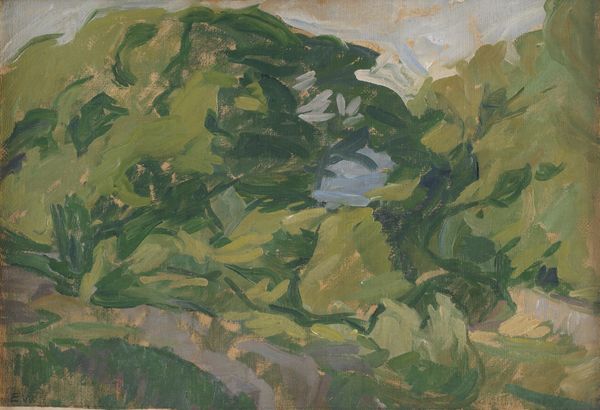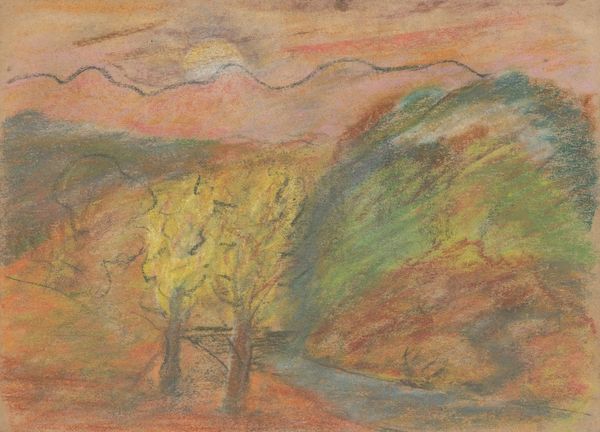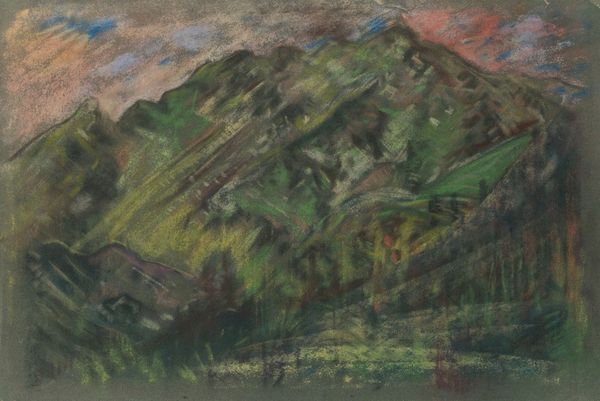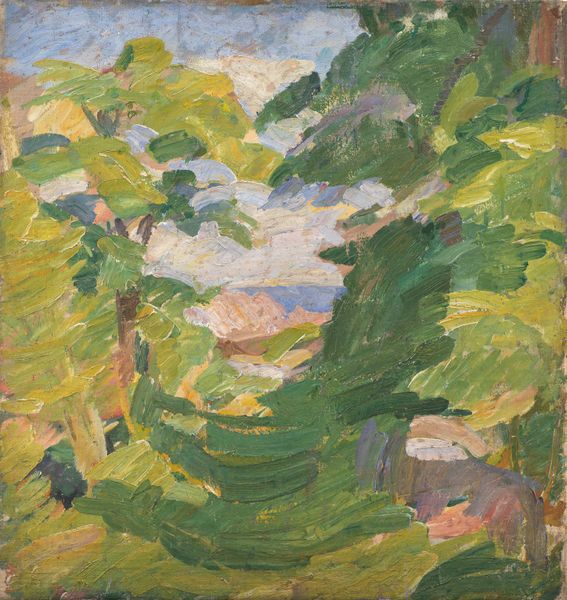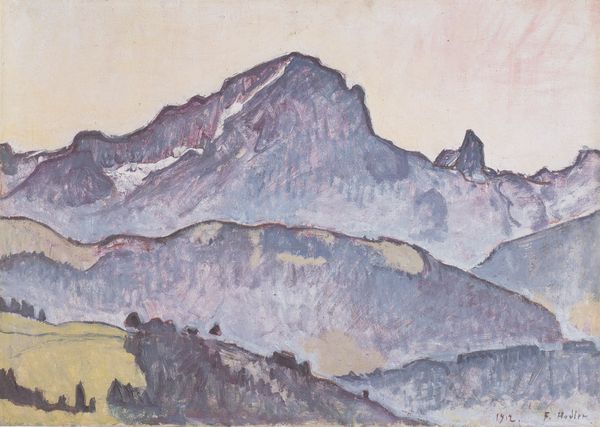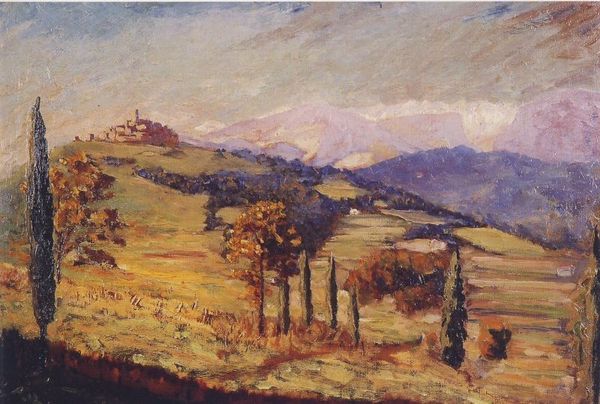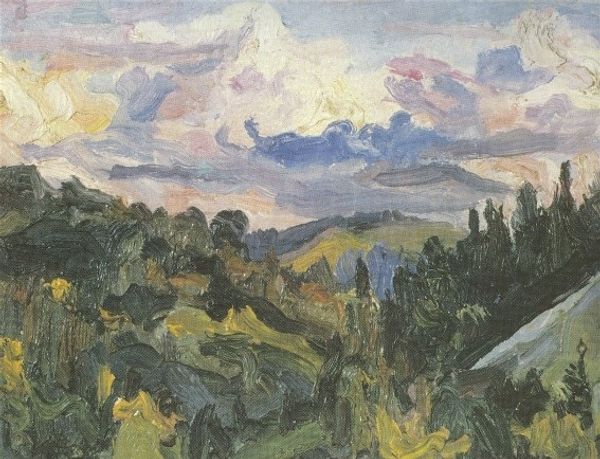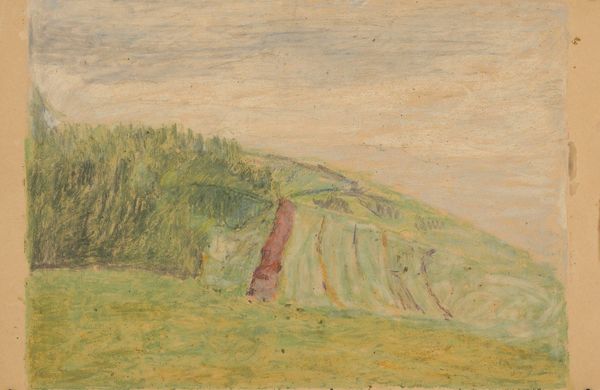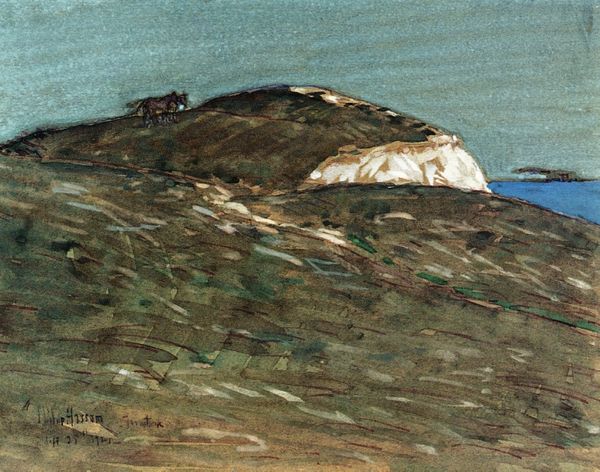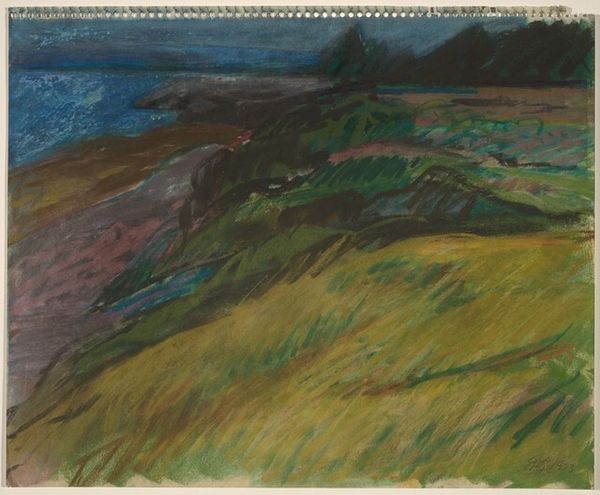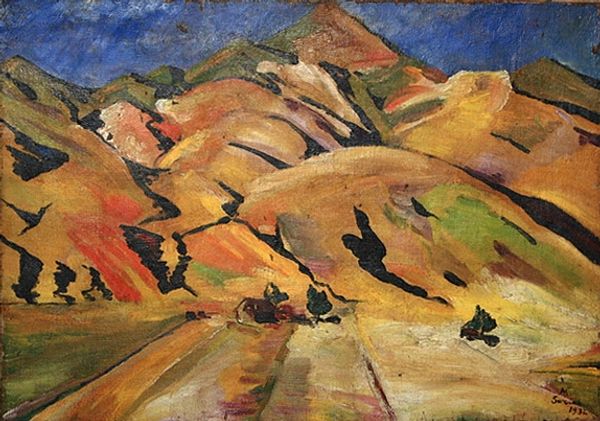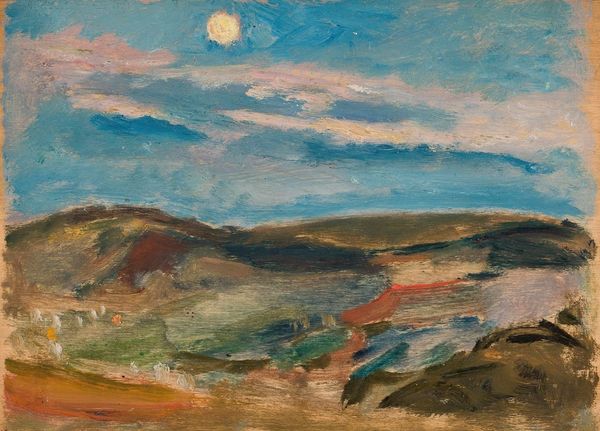
Copyright: Public domain US
Curator: This is "Rochedos (Monhegan Island)," an oil painting crafted in 1915 by Anita Malfatti. I'm captivated by its raw, untamed energy. What jumps out at you? Editor: Immediately, I see a landscape dominated by formidable rock formations. There's a compression of space, almost a stacking of planes, that removes any illusion of deep recession. Curator: You’ve hit upon a crucial aspect, haven’t you? The picture plane itself feels alive! I find it amazing how Malfatti conjures up this powerful sense of place. I get the impression of standing on a really remote windswept headland… I feel like the sky’s just a heartbeat away. What artistic approaches make that possible? Editor: Her distinct approach includes a synthesis of Post-Impressionist brushwork, with blocks of color defining form, and elements of Expressionism evident in the emotional charge of the composition. You sense that even the materiality of the oil paint, dabbed and swirled onto the canvas, participates in conveying the feeling of roughness. The way that even what we might assume to be green fields is laid down is such vigorous sweeps conveys that tactility too. Curator: Yes! Look at how the composition teeters delightfully! Those planes really tilt towards us, and even though we sense an awareness of the influence of the Modernist art movement in the loose strokes, the earth, for me, remains intensely physical and present. It is though it contains echos of, perhaps, a German expressionist take on Van Gogh! There's so much that makes it feel alive with restless feeling. I am particularly struck by the horizon which somehow never offers resolution. Editor: The restrained palette contributes too. Earthy tones mingle with muted greens and ochres, amplifying that sense of natural rawness. Malfatti presents the scene directly, avoiding the seductive lure of idealization. The rocks themselves become monumental presences because they're not tricked out as picture-perfect. Curator: This work continues to push against and unsettle preconceived notions, doesn’t it? To consider, just for a moment, that it was made in 1915! The history that must have surrounded it. But I wonder if we ought now allow those listening to perhaps now engage with this important work of art by one of South Americas’ important and, in this case, ex-patriate artist, and for them conjure for themselves the feeling it imparts. Editor: An astute observation. I, for one, will certainly revisit “Rochedos,” aware that its seeming simplicity cloaks layers of artistic intelligence.
Comments
No comments
Be the first to comment and join the conversation on the ultimate creative platform.
